- Home
- Tom Clancy
Shadow Warriors: Inside the Special Forces Page 10
Shadow Warriors: Inside the Special Forces Read online
Page 10
Later, even as the Uniform Board of the Army tried to grapple with this outrage, a telegram from the White House came to Brigadier General Yarborough, indicating that the President had given his approval to the beret as a symbol of excellence. From that moment on, the green beret was officially sanctioned.
Since then, berets of many varieties have become official headgear for U.S. Army units—first for recognized elites such as Rangers (black berets) and paratroopers (red-maroon). More recently—amid considerable controversy—the entire Army has been given the privilege of wearing black berets (the Rangers will now wear tan).
BE that as it may, the wearing of the berets was not the main event back on that warm autumn day forty years ago. The main event was the “Gabriel Demonstration,” named after a Special Forces soldier named Gabriel—though the name’s associations with the announcing angel Gabriel were not forgotten. The idea was to display the variety, flexibility, and resourcefulness of the A-Detachments as played off against some of the more significant challenges they might be expected to face. Normally, they would have taken the President around to various locations where the teams were in action, but that would not work here, partly because of the nature of special forces, which operate in widely separated areas and in clandestine and covert situations, making observation difficult—but mostly, Ted Clifton informed Yarborough beforehand, because Kennedy’s bad back didn’t allow him much movement.
Instead of bringing the President to the show, they would have to bring the show to the President.
To that end, Clifton and Yarborough worked out a system in which Special Forces skill groups would pass a reviewing stand on floats (or using floats as props) mounted on flatbed trucks. Each one would stop in front of the President, and that element’s activity would be revealed. There was little emphasis on equipment, gear, and weapons. The emphasis was on people.
One float, for example, showed an enemy guerrilla base like those in Laos, South Vietnam, and elsewhere in Southeast Asia. Such bases were hard to find, fix, or destroy, since they moved in fluid fashion and were concealed in swamps, jungles, or mountain hideaways. Finding and destroying such bases, the President was told, required highly trained, specially equipped, light mobile combat units. Special Forces A-Detachments could perform in these roles, but more appropriately, they could train others to do so.
Another float showed how the language and cultural training possessed by A-Detachment troops allowed them to train and assist native forces. Another showed how Special Forces civic actions (such as medical help) supplemented their combat functions, benefited ordinary folks who might otherwise help the bad guys, and helped drain away the seas where enemy guerrillas swam.
Others showed Special Forces psychological and communications skills—by broadcast, loudspeakers in villages, or leaflets. Thousands of leaflets fell out of the sky that day to reinforce the point. Others showed more traditional special operations—such as training friendly guerrillas to operate against enemy convoys and supply dumps deep within enemy territory.
The show worked.
Shortly thereafter, presidential approval came for a much larger Special Forces—more groups, more men, and much more money.
This growth came at a price. The “big” Army was not comfortable with Special Forces, and the presidential blessing did not increase their comfort. Before Bill Yarborough had taken over as commander, Special Forces had been minor and marginalized, though perhaps useful in a protracted conflict. Members of Special Forces could not expect long army careers or fast promotions. It was a dead-end unit.
Much of the army leadership in the Pentagon would have been happy if Special Forces stayed that way.
Before Kennedy’s visit, Bill Yarborough got this message loud and clear from more than one friendly and well-meaning superior. For example, the commander of the XVIII Airborne Corps, a three-star general, told him: “You just got your star, Bill, but I’m going to tell you straight. You’re trying to pull off something that nobody much likes and that nobody’s going to accept unless the President is dead sold on it. I mean, he has to be dead sold on it, because those guys there at the Pentagon are going to go after your ass if he’s not.”
On the other hand, it would be wrong to paint the “big” Army as totally obstructionist.
When Bill Yarborough took over the Special Warfare Center3 in 1961, one of his first directives to his staff was to work out the philosophy that would shape the center according to President Kennedy’s aims—a difficult job made more difficult by the “big” Army’s failure to understand the problems Kennedy was trying to address. However, important elements in the Army did in fact try very hard to carry out the President’s desires in the counterinsurgency arena.
For instance, a Special Warfare Directorate was created within the office of the Army’s Deputy Chief of Staff for Military Operations. In January 1961, this directorate initiated the first courses of instruction in counterinsurgency at the Special Warfare School.
Then, early in 1962, a board of thirteen general officers chaired by General Hamilton Howze gathered at the Special Warfare Center. The Howze Board recommended that all Army officers from colonel through four-star general, as well as all the Army divisions in the United States, should be educated and trained in counterinsurgency. The Board also recommended doubling Special Forces from the then-2,300 to 4,600. By mid- 1968, this level had been raised to eight Special Forces groups totalling more than 9,000 men.
MEANWHILE, the show Yarborough and Clifton put on for the President that October day was really the culmination of three entwined, but not (at that time) totally recognized or understood, forces.
First—and he did not know this—Bill Yarborough had been handpicked by Kennedy for the command of Special Forces, with help and advice from Ted Clifton. The President had told the Army Chief of Staff that he wanted Yarborough, so Yarborough he got. This token of executive preference was inevitably resented by “those guys there at the Pentagon,” who liked to be in charge of picking who went where. They didn’t like it when the President took that power away from them, and this meant that Yarborough started with strikes against him.
Second, Bill Yarborough knew that Special Forces was the only U.S. military concept oriented toward the “new form of warfare” that so worried the President, but he also knew that this would be a very tough sell to the Army without Kennedy’s help. The Army had continued to fight World War II—a firepower and massed-forces war—for decades after that war was won. It meant that Yarborough would have to sail close to the wind in order to promote and sell Special Forces. He would have to convince the president and the American public. As Ted Clifton had known well when he passed Yarborough’s name to Kennedy, Yarborough was a master promoter—“Showbiz” to his friends. He was the man for the job.
Third—and this is the primary reason why that October day was Special Forces’ defining moment—now that he had been empowered by his commander-in-chief, Bill Yarborough began to transform Special Forces, making it over in his own image. Yarborough was a creature of many dimensions. And that was what Special Forces became.
In leaving that legacy, he proved through his genius, his vision, and his actions that the Clifton-Kennedy laying-on-of-hands that had brought him to Fort Bragg was the correct choice. Before Yarborough, U.S. Special Forces had been a career backwater. The Special Forces that exist today, with the help of hundreds of other great men, are largely his creation.
In the beginning, Yarborough had been far from pleased to take on the Special Forces job. When he was told to report to Fort Bragg, he was a high-level counterintelligence operative in Europe—commander of the 66th Counterintelligence Corps Group, headquartered in Stuttgart, Germany, where he was charged with providing security for all of the U.S. Army in Europe. His counterintelligence teams worked through field stations throughout Germany, as well as in Italy, Switzerland, and Paris, and they also worked closely with German, British, and French security agencies. It was a job that he adore
d and hated to leave. He loved its international character, its record of successes—they identified, captured, or “neutralized” an amazing number of enemy agents—and its dynamic of intrigue and labyrinthine complexity. It was a terrific job for a highly intelligent man.
Trading all that in for command of what seemed to be a static operation didn’t look like fun, nor did it seem to offer much scope or excitement for a man like Yarborough.
“I couldn’t have been more wrong,” he says now.
Where he was wrong, in fact, was not in his early characterization of his new command, but in not yet seeing what John Kennedy already knew, that a new kind of force was needed to fight a new kind of war. Aaron Bank’s Special Forces had preserved in amber his vision of the OSS and Jedburgh World War II glory days. What was needed now was to transform the soldiers that Bank and Volckmann had trained to rampage behind the lines into fighting men who were far more highly skilled, imaginative, flexible, culturally sensitive, and resourceful.Yarborough produced men capable of handling missions that were far more complex than those he had encountered as an intelligence officer in Europe—and did so with style, finesse, and precisely focused force (when necessary).
It wasn’t what Special Forces had been that was important; it was what they would become—that was the creation of Bill Yarborough.
SHOWBIZ
An army career is not exactly the expected choice of profession for a self-described oddball with an affinity for new ideas. Even stranger, Bill Yarborough was an army brat; his father, a decorated veteran of World War I combat in Siberia and a Russian linguist, retired as a colonel. He had no illusions about army life. Worse, he was a sensitive and highly intelligent young man with artistic tendencies. He loved to draw and paint. Such people tend to have trouble with the Army’s sometimes numbing regulations, thickheaded bureaucracy, and paucity of vision.
On the other hand, young Bill Yarborough recognized that, despite the occasional institutional silliness, his father’s calling was a noble one, that the life could be both fulfilling and fun, and that, most important, he himself was a warrior.
Yarborough joined the Army as an enlisted man in 1931, an experience that gave him invaluable insight into the folks on the ground. He later put that to good use when he commanded Special Forces.
He won an appointment to West Point a year later. At the Academy, he and his classmate Ted Clifton came to run a school publication, the West Point Pointer. Clifton was editor and Yarborough managing editor; he wrote feature articles and drew cartoons—a practice that has stayed with him all his life.
Yarborough graduated in 1936, received his commission as a second lieutenant from the hands of General John J. Pershing, and was assigned to the 57th Infantry, Philippine Scouts, stationed at Fort McKinley on Luzon. In the period before he left for the Philippines, he wooed and married another army brat—though that was not all that Norma and Bill Yarborough had in common: They both shared a lifetime love of the Far East and of the art of Asia (their home in North Carolina is filled with it).
After a three-year tour in the Philippines, Yarborough characteristically found his way to the cutting edge of the new Army, which in the early 1940s meant jumping out of airplanes with a parachute (a not-very-well-developed device). He was among the first to volunteer for and test this new and very dangerous form of warfare.
Paratroopers gave armies greatly increased mobility, but at a cost. The air transports that flew them were vulnerable, and paratroopers couldn’t carry much in the way of support or firepower with them. In their early days, in other words, airborne units operated more like Special Forces teams than regular infantry.
Meanwhile, as he learned the jump trade, his Airborne superiors offered him a chance to exercise his love of symbols.
It’s easy for outsiders to miss the point of the Army’s wealth of institutional symbols. Qualification badges, ribbons, decorations, unit patches—even special hats or boots or songs—have a big place in a soldier’s sense of identity and pride. They’re certainly not essential, but they are more than gaudy decoration. Strong men will choke up now and again when they are put in the presence of some particularly meaningful piece of colored cloth.
This is not to say that there is no place for flamboyance and swagger in a soldier’s outfit. You want dignity but you don’t want a soldier to look timid. A modicum of flair doesn’t hurt here. Yarborough has always been conscious of these truths. “A distinctive uniform,” he writes, “enhances an individual’s pride, makes him a man apart, makes him special.”
Not surprisingly, his paratroop superiors were aware of his knack for drawing and design, and so he was asked to create the first airborne qualification badge, and then to have a silversmith produce enough of them to award the first group of qualifying paratroopers. Airborne forces still wear the wings Bill Yarborough designed.
His talents were not limited to airborne wings. He had a further knack for designing specialized clothing: the first airborne jump boots, for instance—jump boots have had the same kind of meaning for paratroopers that green berets have for Special Forces—and he would later create other pieces of military clothing, some of which found their way into the catalogs of outdoor-clothing specialists such as L.L. Bean.
Early on in his command of the Green Berets, he argued for the use of the Bowie knife, both as a weapon useful in hand-to-hand combat and as a symbol of accomplishment. At one time sabers had satisfied that kind of need, but the Army had taken away sabers. They were no more practical in the twentieth century than horse-mounted cavalry. To Yarborough, the Bowie knife seemed like a splendid replacement, rich in frontier tradition and heroic resonance.
Yarborough’s dream was to present a Bowie knife to each new member of his Special Forces, together with the green beret. The knife would have an inscription on each side: on one the soldier’s name, and on the other the Special Forces motto, de oppresso liber (“to free the oppressed”).
The Army never approved the idea—but Bill Yarborough kept coming up with others.
Like the movies, for instance.
Back in 1941, Bill Yarborough had become a leader of the new breed of airborne warrior, and he had learned an important lesson about selling a cutting-edge-but-maybe-somewhat-suspect military unit to both the Army and the American public.
Hollywood helps.
In 1941, RKO made a movie called Parachute Battalion about three young men, played by Robert Preston, Edmund O’Brien, and Harry Carey, who go through parachute training. Since it would not do to have big stars risk their lives jumping out of airplanes, Bill Yarborough and his paratroop companions stood in as stunt doubles. It was not a memorable movie, but it did glamorize airborne forces, and made both the “big” Army and the public take more notice of them.
Later, Yarborough grabbed a similar opportunity when the writer Robin Moore presented himself at his doorstep with an idea for a novel about Special Forces. Yarborough liked the idea so much that he became a kind of muse in the writing of The Green Berets, which later became the hit John Wayne movie.
The Green Berets turned out to be the Special Forces “Gabriel Demonstration” for the American public.
But Yarborough didn’t stop there.
As far back as his service as an enlisted man, he’d loved military bands. He loved the way the old marches and military hymns stirred the heart. Later, as Special Forces commander, he felt strongly that the Green Berets deserved a heart-stirring military hymn of their own. First, he got the bandmaster at West Point to write a Green Beret march. Then one day, totally out of the blue, a young SF sergeant named Barry Sadler came into Yarborough’s office and started playing a song he’d written called “The Ballad of the Green Beret.”
Fighting soldiers from the sky, Fearless men who jump and die....
One thing led to another, and before long, Sergeant Sadler, still on active duty, appeared on The Ed Sullivan Show to sing his ballad. The public was knocked out; the song was a hit; it was translated into many
languages; affection and respect for U.S. Special Forces mushroomed—and Bill Yarborough not only had a hymn, he had another huge public relations success for his Green Berets.4
Now he had his Special Forces novel, his Special Forces movie, and his Special Forces hymn. He needed only one more further component: a Special Forces prayer—some nondenominational words that would express and define the way Special Forces soldiers might relate to their God (there being no atheists in foxholes). It had to be something that would relate to all of his men, whatever the race or creed. And this is what he wrote:
Almighty God, who art the author of liberty and the champion of the oppressed, hear our prayer.
We, the men of Special Forces, acknowledge our dependence upon thee in the preservation of human freedom.
Go with us as we seek to defend the defenseless and to free the enslaved.
May we ever remember that our nation, whose motto is “In God We Trust,” expects that we shall acquit ourselves with honor, that we may never bring shame upon our faith, our families, or our fellow men.
Grant us wisdom from thy mind, courage from thine heart, strength from thine arm, and protection by thine hand.
It is for thee that we do battle, and to thee belongs the victor’s crown.
For thine is the kingdom and the power and the glory forever. Amen.
Meanwhile, back in World War II, Yarborough continued to jump out of airplanes, but now in combat—in the invasion of North Africa in November of 1942 (the first use of American parachute troops in combat) and in later operations in Tunisia. The parachute battalion he commanded for the invasion of Sicily lost twenty-three airplanes to “friendly” antiaircraft fire. His paratroop battalion later fought at Anzio, and one of his troops, Sergeant Paul B. Huff, was the first parachute soldier to win the Medal of Honor. Later, his battalion dropped into southern France and fought along the French Riviera to the Maritime Alps. As the war was ending, he received a battlefield promotion to full colonel and was given command of an infantry regimental combat team that fought along the rugged Italian coast to Genoa. During the process, he won a Silver Star.

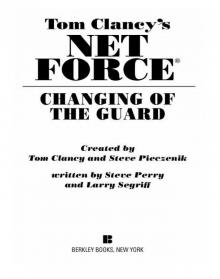 Changing of the Guard
Changing of the Guard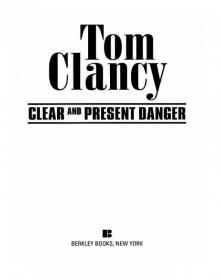 Clear and Present Danger
Clear and Present Danger Hounds of Rome
Hounds of Rome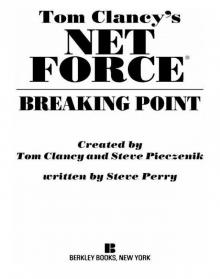 Breaking Point
Breaking Point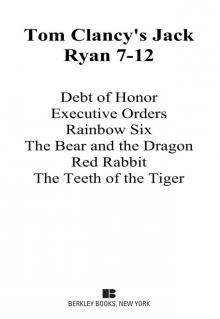 Tom Clancy's Jack Ryan Books 7-12
Tom Clancy's Jack Ryan Books 7-12 Full Force and Effect
Full Force and Effect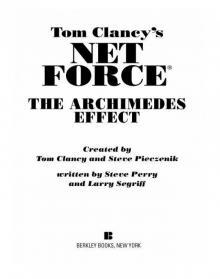 The Archimedes Effect
The Archimedes Effect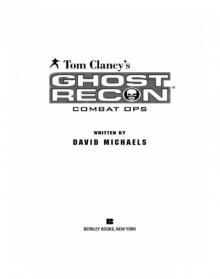 Combat Ops
Combat Ops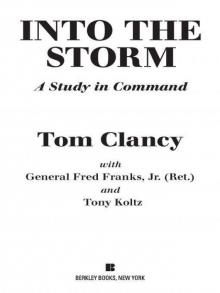 Into the Storm: On the Ground in Iraq
Into the Storm: On the Ground in Iraq Under Fire
Under Fire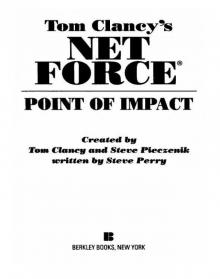 Point of Impact
Point of Impact Red Rabbit
Red Rabbit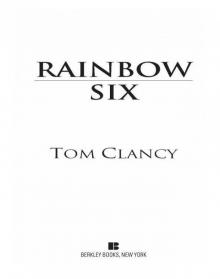 Rainbow Six
Rainbow Six The Hunt for Red October
The Hunt for Red October The Teeth of the Tiger
The Teeth of the Tiger Conviction (2009)
Conviction (2009)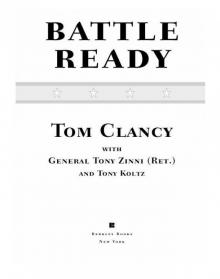 Battle Ready
Battle Ready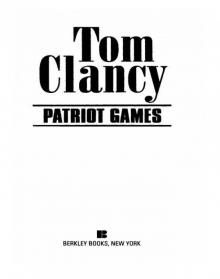 Patriot Games
Patriot Games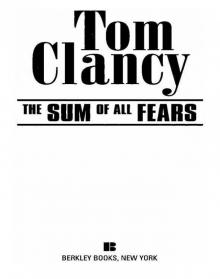 The Sum of All Fears
The Sum of All Fears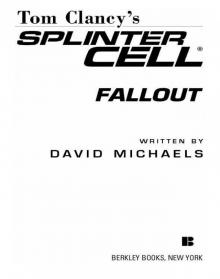 Fallout (2007)
Fallout (2007) Red Storm Rising
Red Storm Rising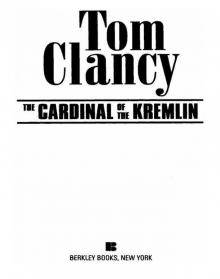 The Cardinal of the Kremlin
The Cardinal of the Kremlin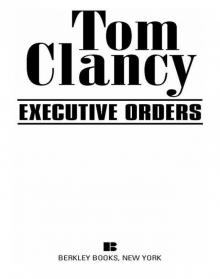 Executive Orders
Executive Orders Lincoln, the unknown
Lincoln, the unknown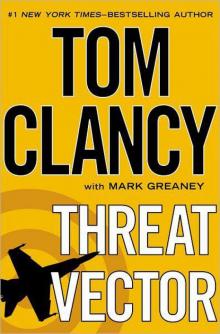 Threat Vector
Threat Vector The Hunted
The Hunted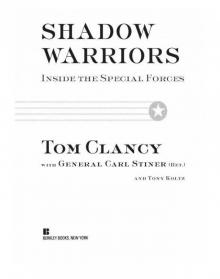 Shadow Warriors: Inside the Special Forces
Shadow Warriors: Inside the Special Forces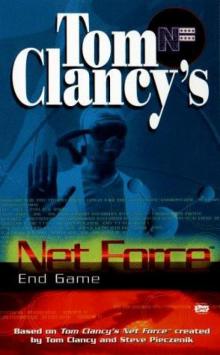 End Game
End Game Special Forces: A Guided Tour of U.S. Army Special Forces
Special Forces: A Guided Tour of U.S. Army Special Forces Locked On
Locked On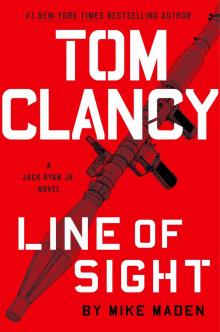 Line of Sight
Line of Sight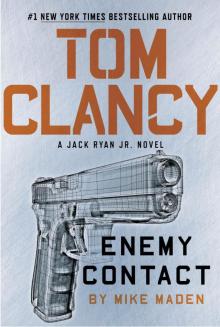 Tom Clancy Enemy Contact - Mike Maden
Tom Clancy Enemy Contact - Mike Maden Fighter Wing: A Guided Tour of an Air Force Combat Wing
Fighter Wing: A Guided Tour of an Air Force Combat Wing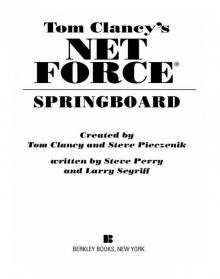 Springboard
Springboard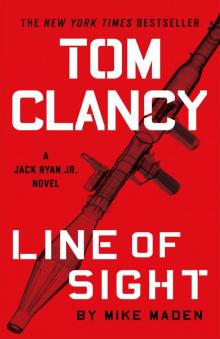 Line of Sight - Mike Maden
Line of Sight - Mike Maden EndWar
EndWar Dead or Alive
Dead or Alive Tom Clancy Support and Defend
Tom Clancy Support and Defend Checkmate
Checkmate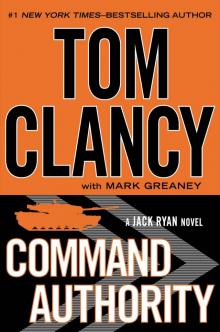 Command Authority
Command Authority Carrier: A Guided Tour of an Aircraft Carrier
Carrier: A Guided Tour of an Aircraft Carrier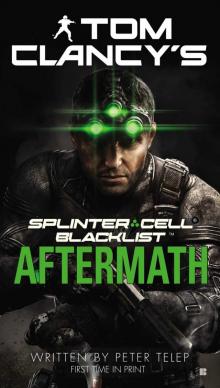 Blacklist Aftermath
Blacklist Aftermath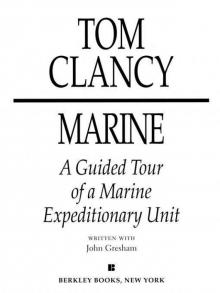 Marine: A Guided Tour of a Marine Expeditionary Unit
Marine: A Guided Tour of a Marine Expeditionary Unit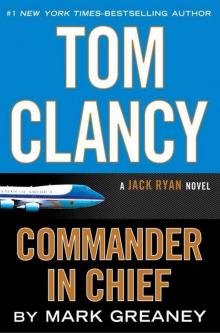 Commander-In-Chief
Commander-In-Chief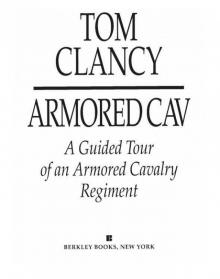 Armored Cav: A Guided Tour of an Armored Cavalry Regiment
Armored Cav: A Guided Tour of an Armored Cavalry Regiment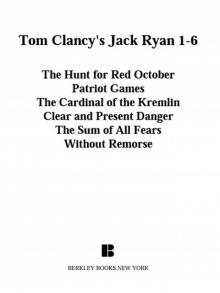 Tom Clancy's Jack Ryan Books 1-6
Tom Clancy's Jack Ryan Books 1-6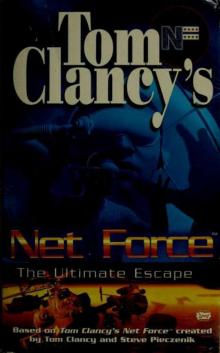 The Ultimate Escape
The Ultimate Escape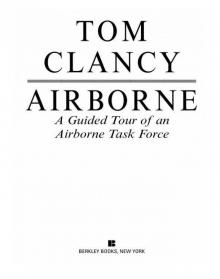 Airborne: A Guided Tour of an Airborne Task Force
Airborne: A Guided Tour of an Airborne Task Force Debt of Honor
Debt of Honor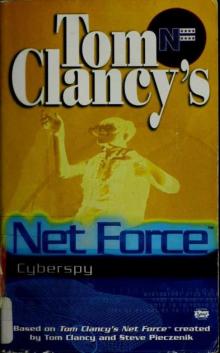 Cyberspy
Cyberspy Point of Contact
Point of Contact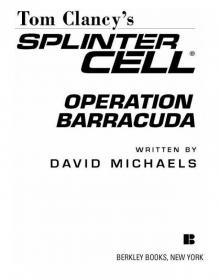 Operation Barracuda (2005)
Operation Barracuda (2005)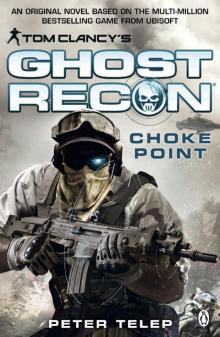 Choke Point
Choke Point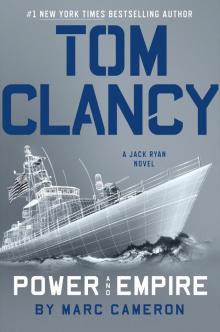 Power and Empire
Power and Empire Every Man a Tiger: The Gulf War Air Campaign
Every Man a Tiger: The Gulf War Air Campaign Endgame (1998)
Endgame (1998)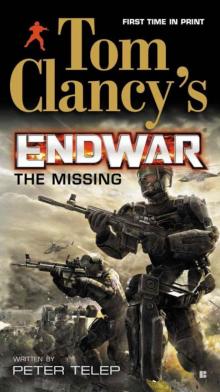 EndWar: The Missing
EndWar: The Missing Splinter Cell (2004)
Splinter Cell (2004) The Great Race
The Great Race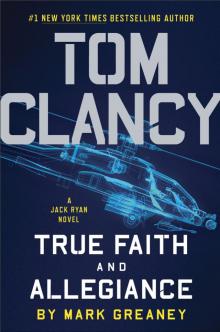 True Faith and Allegiance
True Faith and Allegiance Deathworld
Deathworld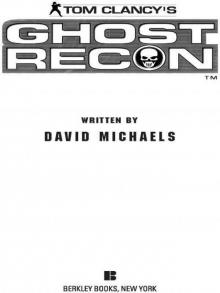 Ghost Recon (2008)
Ghost Recon (2008) Duel Identity
Duel Identity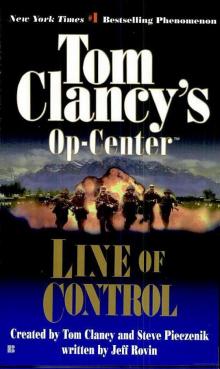 Line of Control o-8
Line of Control o-8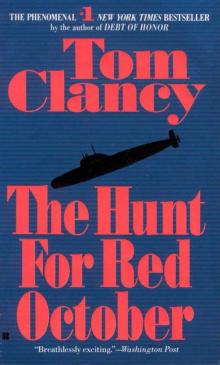 The Hunt for Red October jr-3
The Hunt for Red October jr-3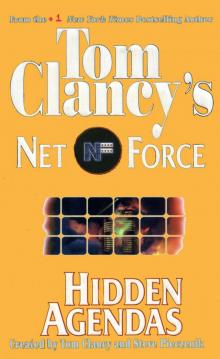 Hidden Agendas nf-2
Hidden Agendas nf-2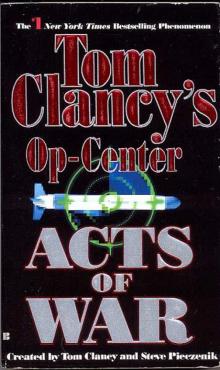 Acts of War oc-4
Acts of War oc-4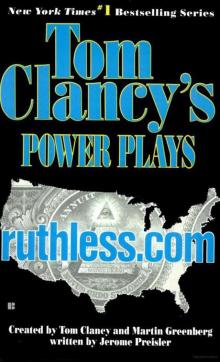 Ruthless.Com pp-2
Ruthless.Com pp-2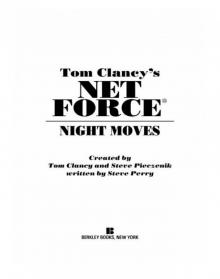 Night Moves
Night Moves The Hounds of Rome - Mystery of a Fugitive Priest
The Hounds of Rome - Mystery of a Fugitive Priest Into the Storm: On the Ground in Iraq sic-1
Into the Storm: On the Ground in Iraq sic-1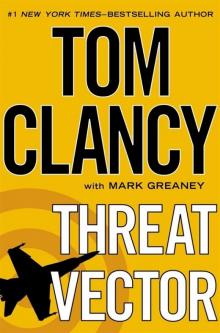 Threat Vector jrj-4
Threat Vector jrj-4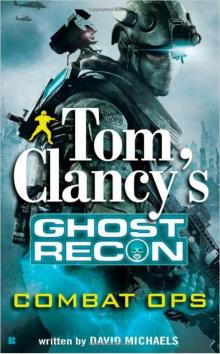 Combat Ops gr-2
Combat Ops gr-2 Virtual Vandals nfe-1
Virtual Vandals nfe-1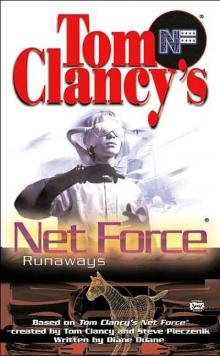 Runaways nfe-16
Runaways nfe-16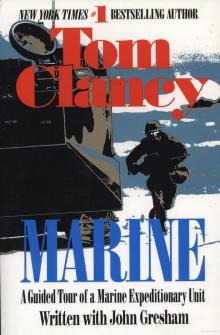 Marine: A Guided Tour of a Marine Expeditionary Unit tcml-4
Marine: A Guided Tour of a Marine Expeditionary Unit tcml-4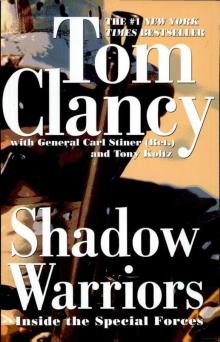 Shadow Warriors: Inside the Special Forces sic-3
Shadow Warriors: Inside the Special Forces sic-3 Jack Ryan Books 1-6
Jack Ryan Books 1-6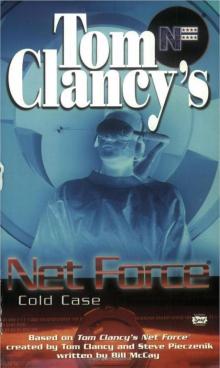 Cold Case nfe-15
Cold Case nfe-15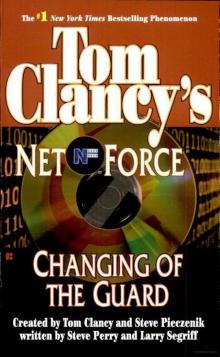 Changing of the Guard nf-8
Changing of the Guard nf-8 Splinter Cell sc-1
Splinter Cell sc-1 Battle Ready sic-4
Battle Ready sic-4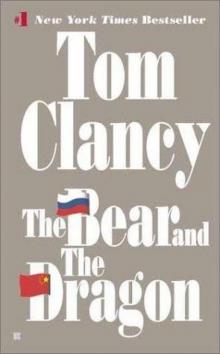 The Bear and the Dragon jrao-11
The Bear and the Dragon jrao-11 Fighter Wing: A Guided Tour of an Air Force Combat Wing tcml-3
Fighter Wing: A Guided Tour of an Air Force Combat Wing tcml-3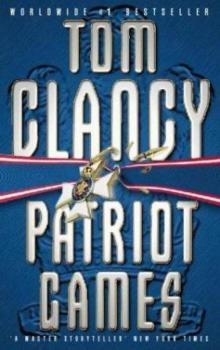 Patriot Games jr-1
Patriot Games jr-1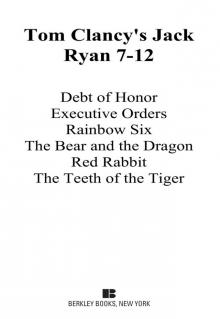 Jack Ryan Books 7-12
Jack Ryan Books 7-12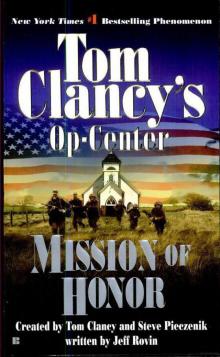 Mission of Honor o-9
Mission of Honor o-9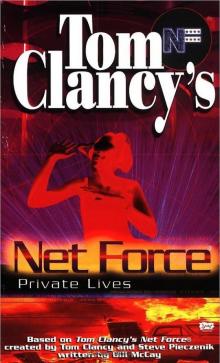 Private Lives nfe-9
Private Lives nfe-9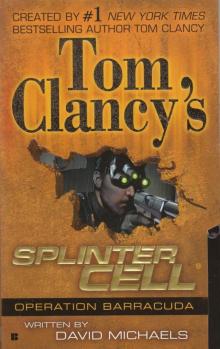 Operation Barracuda sc-2
Operation Barracuda sc-2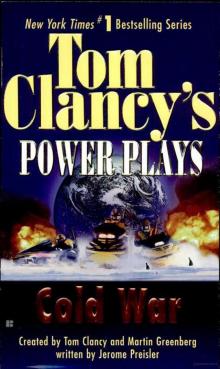 Cold War pp-5
Cold War pp-5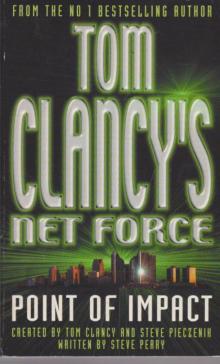 Point of Impact nf-5
Point of Impact nf-5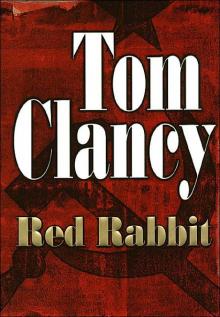 Red Rabbit jr-9
Red Rabbit jr-9 The Deadliest Game nfe-2
The Deadliest Game nfe-2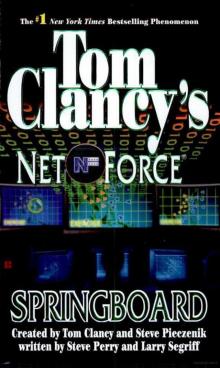 Springboard nf-9
Springboard nf-9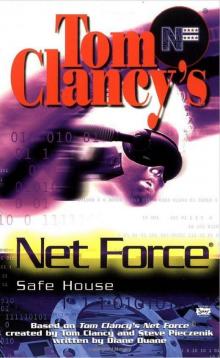 Safe House nfe-10
Safe House nfe-10 EndWar e-1
EndWar e-1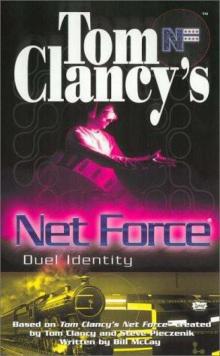 Duel Identity nfe-12
Duel Identity nfe-12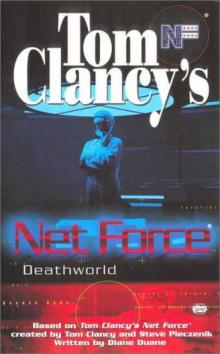 Deathworld nfe-13
Deathworld nfe-13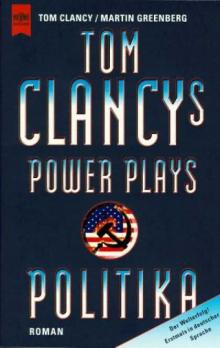 Politika pp-1
Politika pp-1 Rainbow Six jr-9
Rainbow Six jr-9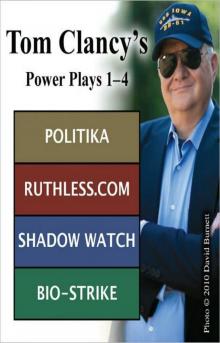 Tom Clancy's Power Plays 1 - 4
Tom Clancy's Power Plays 1 - 4 Endgame sc-6
Endgame sc-6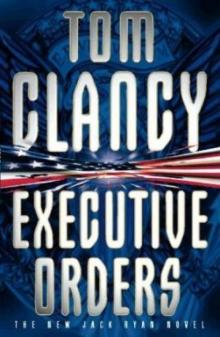 Executive Orders jr-7
Executive Orders jr-7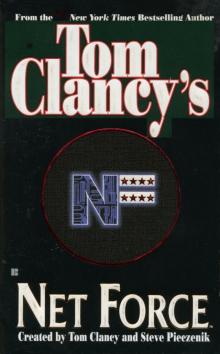 Net Force nf-1
Net Force nf-1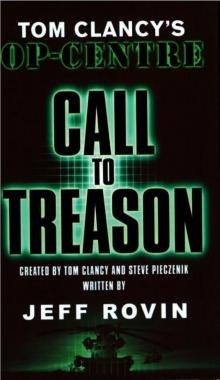 Call to Treason o-11
Call to Treason o-11 Locked On jrj-3
Locked On jrj-3 Against All Enemies
Against All Enemies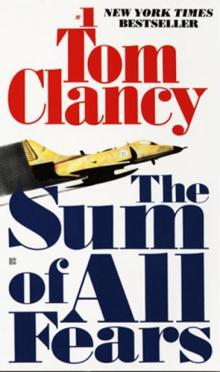 The Sum of All Fears jr-7
The Sum of All Fears jr-7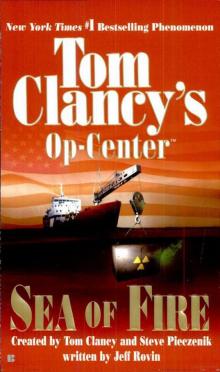 Sea of Fire o-10
Sea of Fire o-10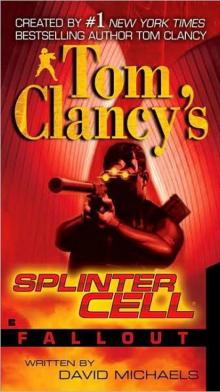 Fallout sc-4
Fallout sc-4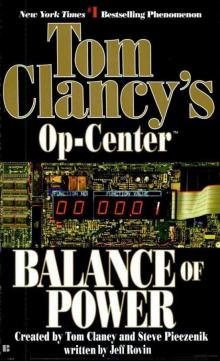 Balance of Power o-5
Balance of Power o-5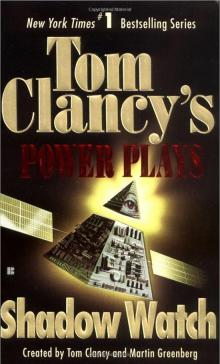 Shadow Watch pp-3
Shadow Watch pp-3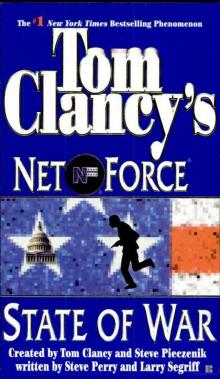 State of War nf-7
State of War nf-7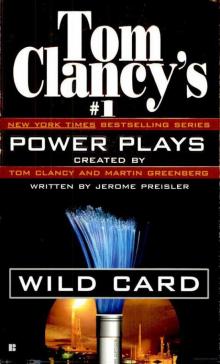 Wild Card pp-8
Wild Card pp-8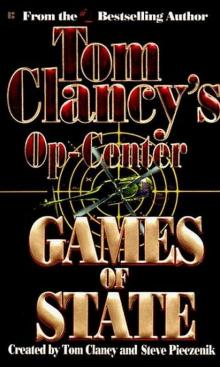 Games of State o-3
Games of State o-3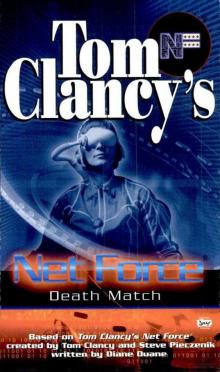 Death Match nfe-18
Death Match nfe-18 Against All Enemies mm-1
Against All Enemies mm-1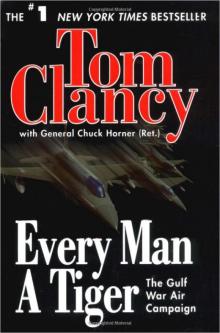 Every Man a Tiger: The Gulf War Air Campaign sic-2
Every Man a Tiger: The Gulf War Air Campaign sic-2 Cybernation nf-6
Cybernation nf-6 Support and Defend
Support and Defend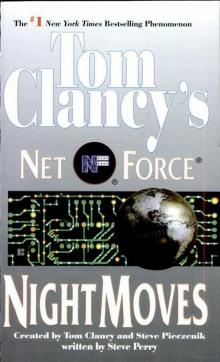 Night Moves nf-3
Night Moves nf-3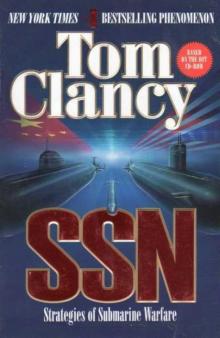 SSN
SSN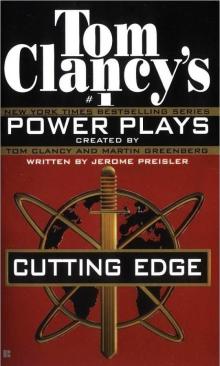 Cutting Edge pp-6
Cutting Edge pp-6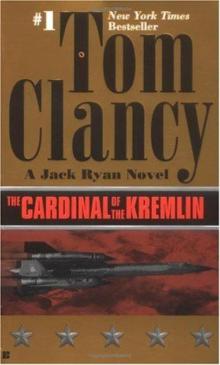 The Cardinal of the Kremlin jrao-5
The Cardinal of the Kremlin jrao-5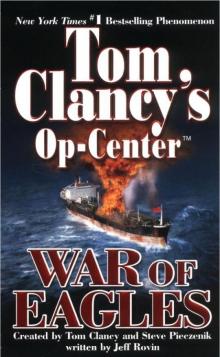 War of Eagles o-12
War of Eagles o-12 Op-Center o-1
Op-Center o-1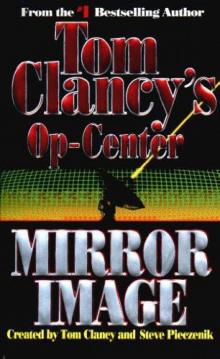 Mirror Image o-2
Mirror Image o-2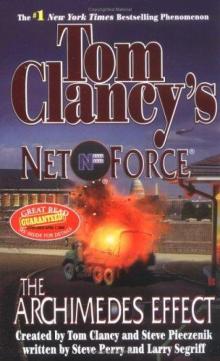 The Archimedes Effect nf-10
The Archimedes Effect nf-10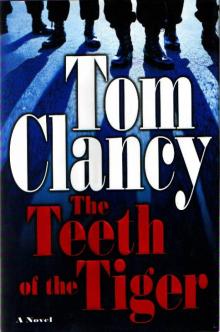 Teeth of the Tiger jrj-1
Teeth of the Tiger jrj-1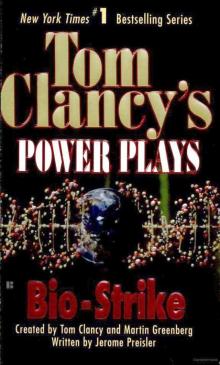 Bio-Strike pp-4
Bio-Strike pp-4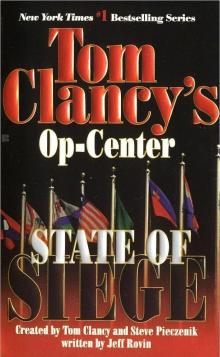 State of Siege o-6
State of Siege o-6 Debt of Honor jr-6
Debt of Honor jr-6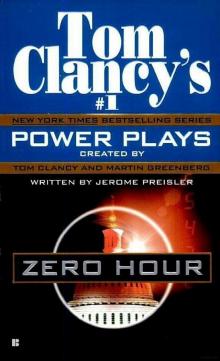 Zero Hour pp-7
Zero Hour pp-7 Ghost Recon gr-1
Ghost Recon gr-1 Command Authority jr-10
Command Authority jr-10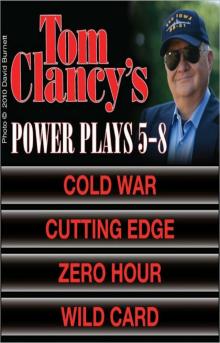 Tom Clancy's Power Plays 5 - 8
Tom Clancy's Power Plays 5 - 8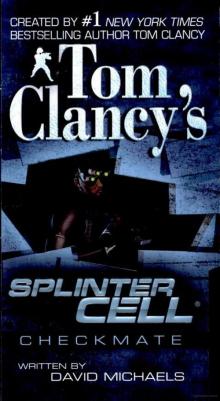 Checkmate sc-3
Checkmate sc-3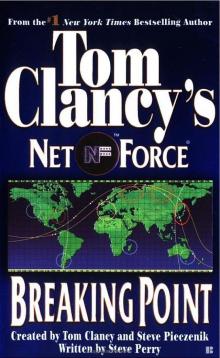 Breaking Point nf-4
Breaking Point nf-4 Gameprey nfe-11
Gameprey nfe-11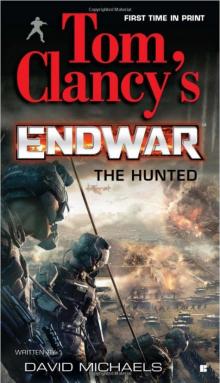 The Hunted e-2
The Hunted e-2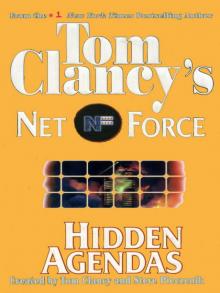 Hidden Agendas
Hidden Agendas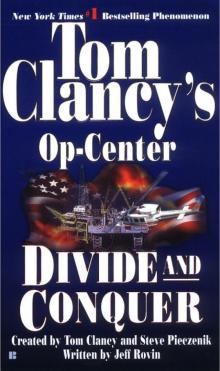 Divide and Conquer o-7
Divide and Conquer o-7